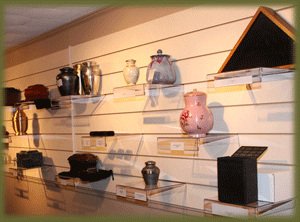

Cremation and the Funeral
The choice of cremation in no way eliminates a funeral. A traditional or contemporary-type service is often planned to take place before the cremation process. Contrary to what some people believe, cremation does not limit one's choices, but, in fact, increases one's options. It need not be looked upon as being a break in family or religious traditions. Cremation, in fact, is only one part in a series of events that leads to memorialization
Cremation and Memorialization
Once the funeral service has been arranged, including cremation, arrangements should be made for establishing a permanent memorial to serve as a focal point for remembrance. Options for memorialization are many and can be discussed with a funeral director or with a representative of the memorial facility.
The disposition of cremated remains is influenced by the type of memorialization desired. Usually cremated remains are placed in some type of permanent receptacle, referred to as an urn, before being committed to a final resting place.
The container may be...
placed in an indoor or outdoor mausoleum or columbarium;
interred in a family burial plot;
interred in a special urn garden that many cemeteries provide.
Cremated remains also may be scattered in cemetery gardens especially created and dedicated for this purpose. Individuals whose remains have been scattered in the garden can be identified by name on a special memorial plaque, marker or artwork or in a Book of Remembrance in a building on the cemetery grounds.
The scattering of remains also may be done at a designated geographical spot on land or water in accordance with state, national or local laws. If scattering is done, it is highly advisable that a site also be chosen for permanent memorial that will provide a place or pilgrimage for those who want to remember and celebrate the life of the loved one.
Have questions about cremations? You may contact us by e-mail or phone.
|